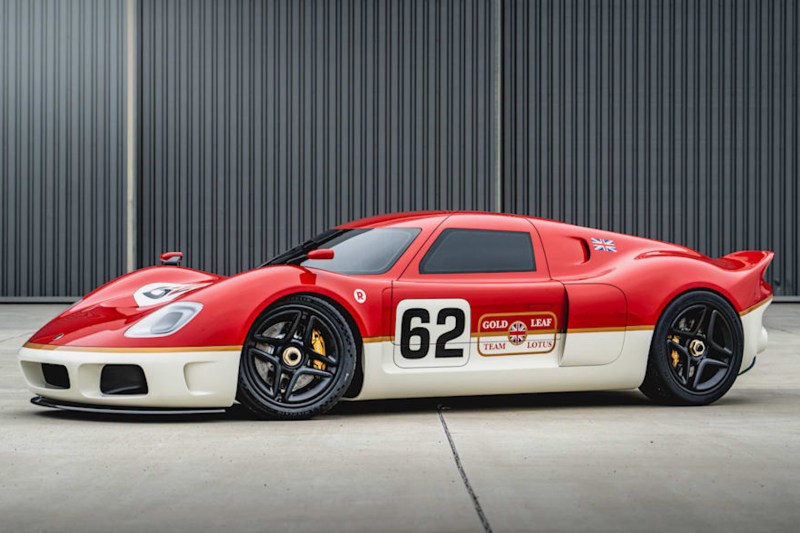
Lotus gained fame for its success in the world of Formula One. Its lightweight sports car that focused on the act of driving and not outright speed probably played a role in Lotus’ prominence, too. Founder Colin Chapman’s ethos of reducing weight was showcased in every vehicle Lotus made, including the not-so-well-known Type 62 race car from the late ‘60s. While Lotus is looking to a future with electric vehicles, the coachbuilders at the recently resurrected Radford thought it was a good idea to show the old Type 62 some love. So, with some help from Lotus, they’ve created this gorgeous piece of retro art: The Radford Type 62-2.
Related Guides
The Radford Type 62-2 may have a futuristic design and be based on an undisclosed modern Lotus, but it’s clearly a tribute to the old racer. That much is clear from the red and white livery the vehicle wears, which is the same one that was on the old race car. Being based on a race car and having a helping hand from Lotus, weight savings is a focal point of the new 62-2. A carbon fiber body and an aluminum chassis help keep the vehicle’s dry weight to roughly 2,204 pounds. That’s not too far off the Mazda MX-5 Miata.

Being light is one thing, but if you’re going to be inspired by a race car, you’re going to need a hefty punch. Lotus enthusiasts will surely recognize the supercharged 3.5-liter V6 engine. In the case of the 62-2, the amount of power the engine makes depends on the trim that buyers choose. Radford plans to offer the 62-2 in three versions: Classic, Gold Leaf, and John Player Special. The Classic is rated at 430 horsepower, while the Gold Leaf, which is the one with the red and white livery, has a 500-hp version of the engine. The John Player Special bumps power up to 600hp thanks to an improved supercharger. While having more horsepower is a nice thing, only the Classic edition is available with a six-speed manual. The rest come with a seven-speed dual-clutch automatic.
Performance isn’t the only thing that separates the three versions from one another. Radford will sell the Classic version in solid colors and a more low-key body kit that’s inspired by the earlier versions of the Lotus Type 62. Gold Leaf models will get a more aggressive look with double ducktail spoilers. Lastly, the John Player Special will have the most extreme body kit and will most likely be finished in the historic black and gold color scheme that was seen on Lotus Formula One cars.

The design and name of the Radford Type 62-2 may be old school, but it comes with some high-tech goodies. The exterior mirrors have been replaced with cameras and a 6-inch display behind the steering wheel, while the infotainment system includes a Wi-Fi hotspot. Radford has also thought through all of the annoying characteristics of classic cars, like how hard they are to get into and out of and how owners can’t really use them every day. With that in mind, the doors have an indentation that’s similar to the Ford GT40 and there’s some luggage space in the engine compartment.
The list of personnel that founded Radford is impressive. Mark Stubbs designed the car, 2009 Formula One World Champion Jenson Button helped sort out its driving dynamics, and television personality Ant Anstead and businessman Roger Behle are also co-founders.

No two Radford Type 62-2s will be alike, as only 62 will be built and each of them will be customized to a buyer’s specifications. As with other coach-built vehicles, we don’t expect the Radford Type 62-2 to be cheap. Production of the retro supercar will begin before the end of 2021 with the first model set to be delivered in early 2022.



